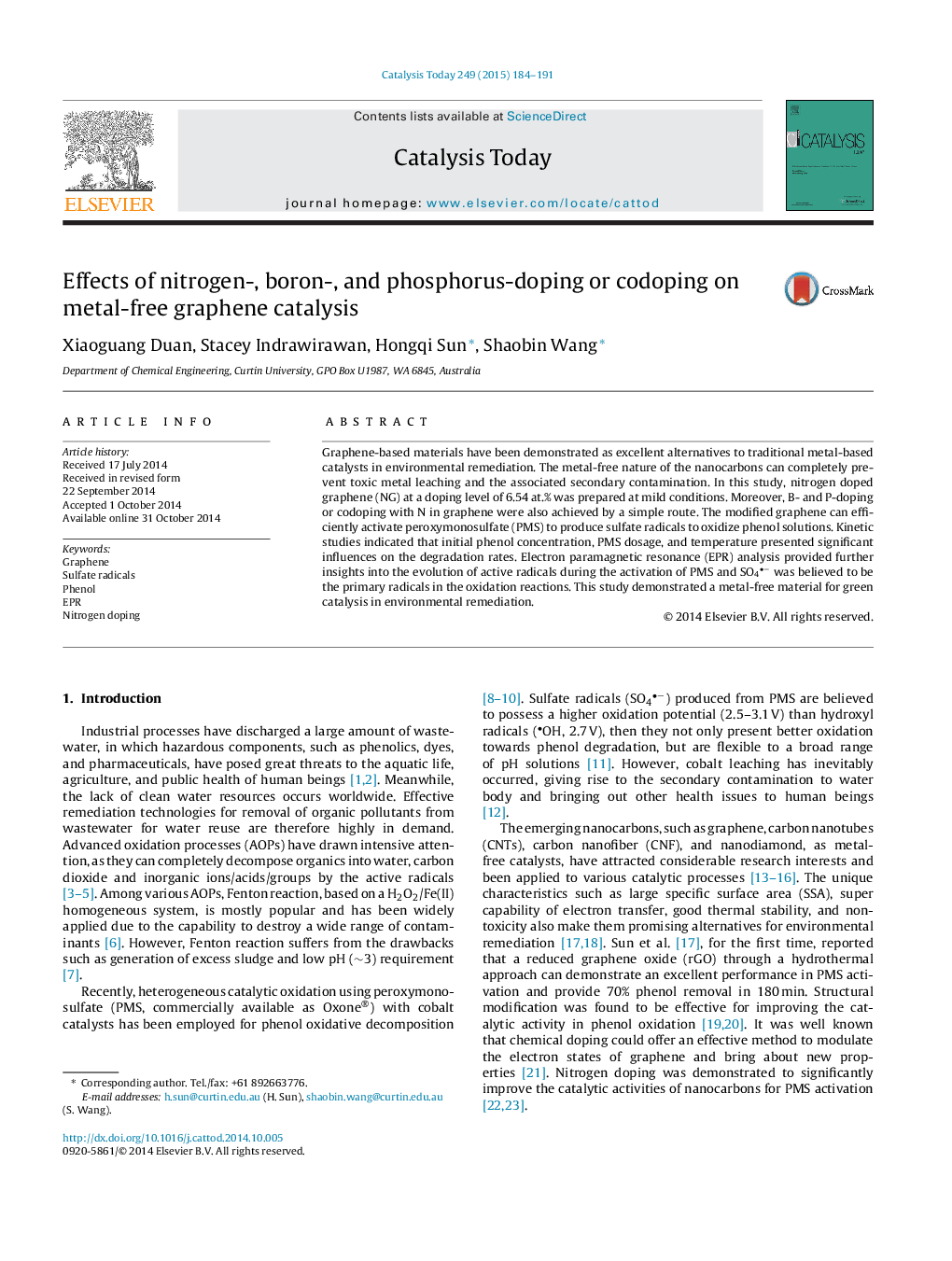| کد مقاله | کد نشریه | سال انتشار | مقاله انگلیسی | نسخه تمام متن |
|---|---|---|---|---|
| 53725 | 46981 | 2015 | 8 صفحه PDF | دانلود رایگان |
• N-, B-, P-doping and codoping graphene was achieved by a simple method.
• N-doped graphene exhibits high activity in metal-free oxidation of phenol.
• N-doping induces positive effect on activity while B- or P-doping does not.
• Electron paramagnetic resonance (EPR) demonstrates radical generation.
Graphene-based materials have been demonstrated as excellent alternatives to traditional metal-based catalysts in environmental remediation. The metal-free nature of the nanocarbons can completely prevent toxic metal leaching and the associated secondary contamination. In this study, nitrogen doped graphene (NG) at a doping level of 6.54 at.% was prepared at mild conditions. Moreover, B- and P-doping or codoping with N in graphene were also achieved by a simple route. The modified graphene can efficiently activate peroxymonosulfate (PMS) to produce sulfate radicals to oxidize phenol solutions. Kinetic studies indicated that initial phenol concentration, PMS dosage, and temperature presented significant influences on the degradation rates. Electron paramagnetic resonance (EPR) analysis provided further insights into the evolution of active radicals during the activation of PMS and SO4
• − was believed to be the primary radicals in the oxidation reactions. This study demonstrated a metal-free material for green catalysis in environmental remediation.
Figure optionsDownload high-quality image (106 K)Download as PowerPoint slide
Journal: Catalysis Today - Volume 249, 1 July 2015, Pages 184–191
